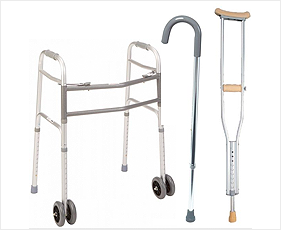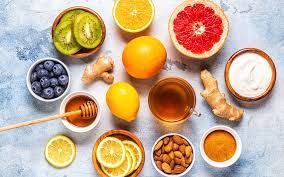Ambulatory Devices: Mastering Canes, Crutches, and Walkers Like a Pro

When it comes to finding support (literally), canes, crutches, and walkers can be lifesavers. These devices help people maintain mobility, regain independence, and reduce the risk of falls. But to get the best results, knowing how to use each one properly is key. So, let’s dive into the basics to keep you moving with confidence and ease!
Cane You Handle This?
A cane is a fantastic aid for those who need a little extra stability and support for a single leg. But here’s the trick—if your right leg needs help, hold the cane on your left side. Counterintuitive? Maybe, but it’s all about balance. Using the cane on the opposite side of the affected leg allows it to better support your weight when you step forward with the “weaker” side. This cross-body balance improves stability and puts less strain on your joints. So, remember: opposite leg, same cane!
To walk properly with a cane:
- Place the cane in front of you as you step with your weaker leg.
- Shift your weight onto the cane, letting it do its job.
- Step through with your stronger leg, and repeat!
Crutch the Right Way
Crutches are the go-to choice for people needing complete relief of weight on one leg. They allow the unaffected leg to take the lead while sparing the injured one. But it’s not enough to just “wing it” with crutches. Position is everything. Make sure your crutches are about an inch below your armpits when you’re standing, with your elbows slightly bent. This helps avoid that dreaded armpit pinch while giving you stable control.
For stairs, remember this handy rule: “Up with the good, down with the bad.”
- Going up: Step up with your good leg first, then bring the crutches and injured leg up.
- Going down: Move the crutches down to the next step first, then follow with your injured leg, and finally your good leg.
This method keeps you steady and ensures the good leg leads the way up and down.
Walking Tall with a Walker
When you need even more support, walkers are there to the rescue. Walkers are ideal for those needing maximum balance assistance, whether due to surgery, weakness, or stability issues. First, make sure your walker is the right height—your elbows should have a slight bend, and the walker should line up with the crease of your wrist when standing upright.
To move forward with a walker:
- Push it a step ahead of you (about an arm’s length).
- Step in with your weaker leg, using the walker to support your weight.
- Follow with your stronger leg, and repeat.
Again, for stairs, follow the “Up with the good, down with the bad” rule if your walker is collapsible or a therapist is guiding you.
When in Doubt, Ask the Pros!
Using these devices is a science and an art. If you’re ever unsure or find using these devices tricky, don’t hesitate to ask your doctor or healthcare provider for a quick tutorial. They can provide helpful tips or adjust your device to ensure it fits your specific needs.
With the right device and a bit of know-how, you’ll be walking, crutching, and striding confidently!
Bethany Wolcott
D’Youville Chiropractic ‘26












